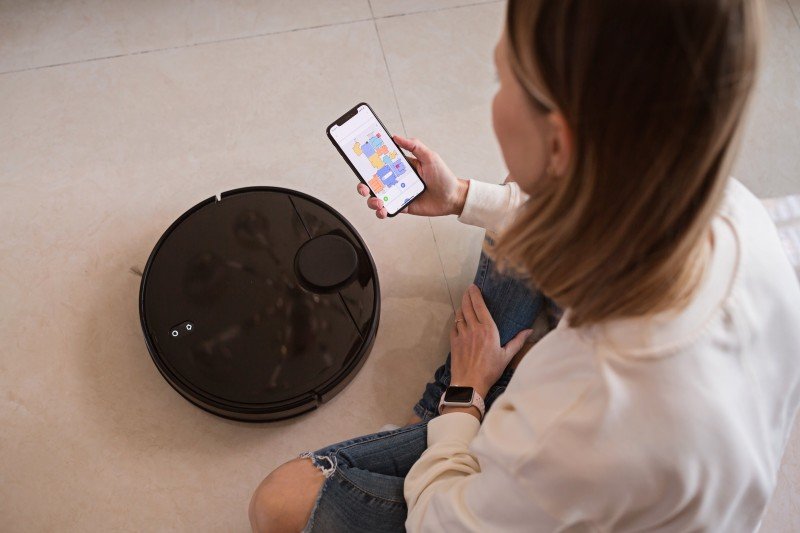The Rise of Robotic Vacuums: A Comprehensive Overview
In today's fast-paced world, innovation is regularly evolving to make our lives simpler, and the home cleaning segment has actually seen among the most notable advancements: the robotic vacuum. This intelligent device not just conserves time and energy however also ensures a cleaner home environment with minimal manual effort. This article looks into the interesting evolution of robotic vacuums, how they work, their advantages and drawbacks, market patterns, and future directions.
The Evolution of Robotic Vacuums
Robotic vacuums have made great strides because their creation in the late 1990s. The very first commercially available robotic vacuum was introduced in 1996, followed by various designs, each designed with escalating sophistication and features. Here is a quick timeline of robotic vacuum development:
| Year | Event |
|---|---|
| 1996 | Launch of the very first robotic vacuum (Electrolux's Trilobite) |
| 2002 | iRobot Roomba is released, making robotics mainstream |
| 2010 | Introduction of advanced mapping and navigation features |
| 2017 | Combination of AI and smart home compatibility |
| 2022 | Launch of extremely advanced designs including self-emptying dustbins |
How Robotic Vacuums Work
Robotic vacuums utilize a combination of sensors, algorithms, and expert system to browse areas effectively. Here's how they run:
- Navigation: Most robotic vacuums utilize a series of sensing units to detect obstacles and navigate around furnishings. Some high-end models include LIDAR (Light Detection and Ranging) innovation to create comprehensive maps of the environment.
- Cleaning Mechanisms: They are equipped with turning brushes and suction mechanisms to gather particles from different surface areas. Depending upon the design, they can shift between carpets and tough floors perfectly.
- Smart Features: Many modern-day robotic vacuums are Wi-Fi enabled, allowing users to control them remotely via a mobile phone app. Functions typically include scheduling, drawing up cleaning paths, and combination with other smart home devices.
- Self-Maintenance: High-end systems might come with self-emptying abilities, where the robot can dock itself to a base that collects dust and particles without human intervention.
Advantages of Robotic Vacuums
Robotic vacuums have gathered immense appeal, and for good factors. Here are some of the most considerable benefits:
- Time-Saving: Automating the cleaning process permits users to take part in other significant activities.
- Efficient Cleaning: Regular cleaning can be easily attained by scheduling the robot to clean day-to-day or weekly, keeping dirt and allergens at manageable levels.
- Compact Design: Their small size permits them to fit under furnishings and in hard-to-reach locations.
In spite of their benefits, robotic vacuums likewise include restrictions:
- Limited suction power: While they are efficient for maintaining clean floorings, they might not match the deep cleaning of conventional vacuums.
- Battery life: Most models require to return to their dock after a particular period of use.
- Initial costs: High-quality robotic vacuums can be expensive, though rates have been decreasing with improvements in technology.
Existing Market Trends
The market for robotic vacuums is broadening quickly. According to a current market research study report, the worldwide robotic vacuum cleaner market is expected to reach ₤ 7.2 billion by 2027, growing at a CAGR of 23.5%, driven by numerous aspects:
Increased Adoption of Smart Home Devices
The increase of smart home innovation has motivated consumers to incorporate robotic vacuums into their households. Numerous robotic vacuums work seamlessly with home assistants like Amazon Alexa and Google Assistant, simplifying their operation.
Advances in Robotics and AI
As the technology behind robotic vacuums evolves, models are being geared up with much better navigation systems, AI algorithms for finding out personal cleaning habits, and improved functions for particular floor types.
Focus on Health and Hygiene
The increased awareness of cleanliness and hygiene, particularly due to current global occasions, has actually driven consumers to buy devices that routinely get rid of dust, irritants, and family pet hair from their homes.
Future Directions
As innovation advances, robotic vacuums are expected to evolve even more, incorporating functions that increase their efficiency in families. Prepared for advancements consist of:
- Improved AI Learning: With advancements in machine knowing, future models will be much better at understanding their environment and adapting to the needs of their owners.
- Multi-Purpose Design: Potential future models might consist of functions for mopping, disinfecting, and air purification in addition to vacuuming.
- Sustainability: As eco-consciousness rises, manufacturers are likely to concentrate on energy performance, recyclable materials, and sustainable production practices.
Frequently Asked Questions About Robotic Vacuums
1. Can robotic vacuums vacuum on carpet?Yes, a lot of robotic vacuums can shift in between different floor types, including carpets and hard floors. 2. How frequently ought to I run my robotic vacuum?It depends
on your family's cleaning requirements, however lots of users
schedule their robotic vacuums to run everyday or every number of days. 3. Are robotic vacuums worth the investment?For lots of customers, the time saved and convenience provided by robotic vacuums makes them beneficial,
specifically for busy families. 4. Can best vacuums control my robotic vacuum remotely?Most modern robotic vacuums can be managed by means of a smart device app, permitting for scheduling and tracking from anywhere. 5. Do I still require a traditional vacuum cleaner?While robotic vacuums effectively manage day-to-day cleaning, a traditional vacuum may still be necessary for deep cleans up or toughermesses. The improvement of robotic vacuums reflects a significant leap in automating housework, combining innovative innovation with easy to use operation. As the trend towards smart homes continues and customer expectations evolve, robotic vacuums will likely keep improving, supplying ever-greater benefit and effectiveness in keeping tidy home. As house owners think about the possible benefits and restrictions of these devices, it is clear that robotic vacuums have actually strengthened their reputation as important tools in modern home management.

